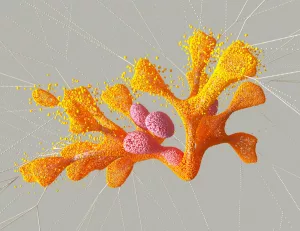Public transportation is on the brink of a technological revolution, with several innovative technologies poised to transform the way we move around cities. From autonomous vehicles to smart infrastructure, each development offers unique advantages and challenges. Let’s dive deeper into how these technologies are reshaping urban landscapes and what they mean for the future of mobility.
Autonomous Vehicles
A Closer Look at Autonomy
Autonomous vehicles are not just a futuristic fantasy; they are becoming a reality in many cities worldwide. These self-driving vehicles, ranging from buses to shuttles, are equipped with a myriad of sensors such as LIDAR, cameras, and radar that allow them to perceive their surroundings with incredible precision. The integration of artificial intelligence enables these vehicles to make real-time decisions, navigate complex urban environments, and even learn from past experiences to improve performance.
Practical Examples
- Waymo’s Autonomous Taxis: In cities like Phoenix, Waymo has already launched a fleet of self-driving taxis that operate without human intervention. Passengers can summon these taxis using an app, much like rideshare services, and enjoy a safe, driverless journey.
- Tesla’s Autopilot: While not fully autonomous, Tesla’s Autopilot feature provides a glimpse into the future of self-driving technology. It assists drivers with steering, acceleration, and braking on highways, reducing the burden of long commutes.
Emerging Pilot Programs
It’s not just large companies making strides in autonomy. Many cities are experimenting with pilot programs to integrate self-driving shuttles into their public transit systems. For instance, in Ann Arbor, Michigan, autonomous shuttles are being tested to connect public transit hubs, providing first-mile and last-mile solutions crucial for improving accessibility.
Challenges and Considerations
Despite their potential, autonomous vehicles face several hurdles, including regulatory approvals, public acceptance, and ethical considerations like decision-making in critical situations. Ensuring cybersecurity to protect against hacking and data breaches is also paramount.
Regulatory Landscape
Navigating the regulatory landscape is complex. Many regions have different standards and laws governing autonomous vehicle testing and deployment. Public transportation agencies must work closely with policymakers to ensure these vehicles meet safety and operational standards while also addressing liability issues in the event of an accident.
Public Perception and Acceptance
Public perception is another significant barrier. Many people are still wary of driverless technology, fearing loss of control or potential malfunctions. To address these concerns, companies and governments are investing in public education campaigns to build trust and demonstrate the safety and reliability of autonomous transport.
Electric Vehicles
The Rise of Electrification
With the global push to reduce carbon emissions, electric vehicles (EVs) are gaining traction in public transportation. Cities are adopting electric buses and trains, supported by advancements in battery technology and expanded charging infrastructure. These vehicles not only lower emissions but also offer operational savings due to reduced fuel costs and maintenance requirements.
Real-World Implementations
- London’s Electric Buses: London has committed to making its entire bus fleet zero-emission by 2037, with electric buses already serving routes across the city. These buses are equipped with fast-charging capabilities, allowing for efficient recharging during service breaks.
- China’s High-Speed Electric Trains: China’s extensive high-speed rail network is powered by electricity, providing a sustainable alternative to domestic air travel and significantly reducing the nation’s transportation-related carbon footprint.
Battery Technology Advances
Battery technology is a critical area of development in electrification. Innovations such as solid-state batteries promise higher energy densities, faster charging times, and longer lifespans. These advancements could make electric public transport even more cost-effective and practical, further accelerating their adoption.
Economic and Environmental Benefits
Electrification is not just about sustainability; it’s also economically viable in the long term. Reduced fuel costs and government incentives make EVs attractive for public transit agencies. Additionally, the quieter operation of electric vehicles contributes to a reduction in noise pollution, enhancing urban livability.
Incentives and Funding
Governments worldwide are offering incentives for electric vehicle adoption, from tax breaks to grants for infrastructure development. For example, the European Union has earmarked billions for green transportation initiatives, encouraging cities to transition to electric buses and trains.
Reducing Urban Pollution
The impact on urban air quality is significant. Cities with high pollution levels are turning to electric transit options to meet air quality standards and improve public health. The shift to electric buses in New York City, for example, is part of a broader initiative to cut greenhouse gas emissions and improve air quality.
Smart Infrastructure
The Backbone of Modern Transit
Smart infrastructure is transforming public transportation by leveraging data and connectivity. Sensors, cameras, and GPS systems collect vast amounts of data, which is then analyzed to optimize transit operations. This technology enables real-time tracking, predictive maintenance, and dynamic routing, ensuring efficient and reliable service.
Case Studies
- Singapore’s Integrated Transport System: Singapore employs a smart transportation system that integrates buses, trains, and taxis. Real-time data informs commuters of the best routes, and AI algorithms adjust traffic signals to prioritize public transit.
- Los Angeles’ Traffic Management: LA uses smart traffic signals that adapt to real-time traffic conditions, reducing congestion and improving bus punctuality.
Predictive Maintenance
Smart infrastructure isn’t just about passenger convenience; it’s also about maintaining the vehicles themselves. By using data analytics, transit agencies can predict when a vehicle is likely to need maintenance, preventing breakdowns and minimizing service disruptions. This proactive approach saves money and increases the reliability of public transport systems.
Enhancing User Experience
Smart infrastructure enhances the passenger experience by providing real-time updates on vehicle locations and expected arrival times. Mobile apps and digital displays at transit stops keep passengers informed, reducing wait times and improving overall satisfaction.
Personalized Travel
With the advent of data-driven technologies, public transport can offer more personalized experiences. For example, apps can suggest routes based on user preferences, such as the fastest journey or the one with the fewest transfers. This level of personalization can increase public transport usage by making it more convenient and user-friendly.
High-Speed Rail
Speed Meets Sustainability
High-speed rail systems offer a fast, efficient, and environmentally friendly alternative to short-haul flights and long-distance car travel. With speeds exceeding 300 km/h, these trains connect major urban centers, reducing travel time and boosting economic connectivity.
Successful Networks
- Japan’s Shinkansen: Known for its punctuality and safety, the Shinkansen network connects major cities across Japan, facilitating millions of journeys each year.
- France’s TGV: The French TGV has transformed travel across Europe, offering high-speed connections between countries and reducing reliance on air travel.
Expansion Plans
Countries like the United States and India are exploring high-speed rail options to connect major cities. In California, a high-speed rail project aims to link Los Angeles with San Francisco, promising to revolutionize travel between these two economic hubs.
Economic and Social Impacts
High-speed rail stimulates economic development along its corridors, encouraging investment and tourism. It also offers an equitable transportation option, providing affordable and accessible travel for people of all income levels.
Job Creation and Development
The construction and operation of high-speed rail lines also generate significant employment opportunities. From engineering and construction jobs to operational roles, these projects can stimulate local economies and provide long-term employment for communities along their routes.
Hyperloop
The Future of Ultra-Fast Travel
Hyperloop technology represents a bold vision for the future of transportation. By using magnetic levitation and vacuum tubes, Hyperloop aims to achieve speeds of over 1000 km/h, drastically cutting travel times between cities.
Prototype Developments
- Virgin Hyperloop’s Test Track: In Nevada, Virgin Hyperloop has successfully conducted passenger trials, demonstrating the feasibility of this cutting-edge technology.
- Elon Musk’s Boring Company: Musk’s vision includes building tunnels to house Hyperloop systems, reducing surface congestion and providing ultra-fast city-to-city travel.
Potential Routes
Several potential Hyperloop routes are in the proposal stage, such as connecting Los Angeles to Las Vegas or Chicago to Pittsburgh. These routes would significantly cut travel time, making day trips between these cities feasible and boosting economic interactions.
Overcoming Challenges
While promising, Hyperloop faces significant technical and regulatory challenges. Building the infrastructure requires substantial investment, and safety standards need to be rigorously tested. Public acceptance and environmental impacts must also be considered.
Infrastructure Costs and Funding
The cost of building Hyperloop infrastructure is substantial, requiring innovative funding solutions. Public-private partnerships could be key, combining government support with private investment to realize these ambitious projects.
Environmental Considerations
Despite its high speed, Hyperloop must address its environmental impact. Concerns include the energy required to maintain the vacuum in the tubes and the potential disruption of ecosystems during construction. Sustainable practices and renewable energy sources will be crucial for minimizing these impacts.
The Role of Data and Connectivity
Intelligent Transit Systems
Beyond individual technologies, the integration of data and connectivity is revolutionizing public transportation. Intelligent transit systems use data analytics to optimize routes, reduce congestion, and improve the overall efficiency of transportation networks.
Real-Time Data Utilization
Cities like Amsterdam have implemented real-time data systems that monitor traffic conditions and adjust public transport schedules accordingly. This dynamic approach not only improves service reliability but also reduces overall travel times for passengers.
Open Data Initiatives
Many cities are adopting open data policies, sharing transit data with developers to create innovative solutions for improving public transport. This transparency fosters collaboration and innovation, leading to apps and services that enhance the user experience.
Collaborative Platforms
Platforms like Citymapper and Moovit utilize open data to provide comprehensive travel solutions, integrating various modes of transportation into a single, easy-to-use interface. These tools empower users with accurate, real-time information, promoting greater use of public transit systems.
Future Trends and Considerations
Integration of Transportation Modes
The future of public transportation lies in the seamless integration of various modes, creating a holistic and efficient network. Technologies like Mobility as a Service (MaaS) are central to this vision, offering users a single platform to plan, book, and pay for their journeys across different transport modes.
MaaS in Action
Helsinki has been at the forefront of MaaS, offering a comprehensive app that allows residents to plan and pay for journeys across buses, trams, bikes, and even scooters. This convenience encourages greater use of public transport and reduces reliance on personal vehicles.
Sustainability and Green Initiatives
Sustainability will continue to be a driving force in the evolution of public transport. Urban planners and transit agencies are increasingly focused on creating eco-friendly systems that reduce emissions and minimize resource consumption.
Green Certifications and Standards
Public transport systems are adopting green certifications, such as LEED for transit facilities, to demonstrate their commitment to sustainability. These certifications ensure that new constructions and renovations meet high environmental standards, supporting the broader goal of reducing urban carbon footprints.
Adaptation to Climate Change
As climate change impacts become more pronounced, public transportation systems must adapt to withstand extreme weather events and rising sea levels. Resilient infrastructure design will be crucial to maintaining service reliability in the face of natural challenges.
Flood-Resilient Designs
Cities like Rotterdam are pioneering flood-resilient infrastructure for their public transport systems, incorporating features like elevated tracks and waterproof stations. These adaptations ensure continuity of service during adverse weather conditions, safeguarding the vital role of public transport in urban mobility.
Through these innovative technologies and forward-thinking strategies, public transportation is not just evolving; it’s transforming into a more efficient, sustainable, and accessible system for everyone. Embracing these changes will be key to building the smart cities of tomorrow, where public transit plays a central role in creating livable, connected, and vibrant urban environments.



